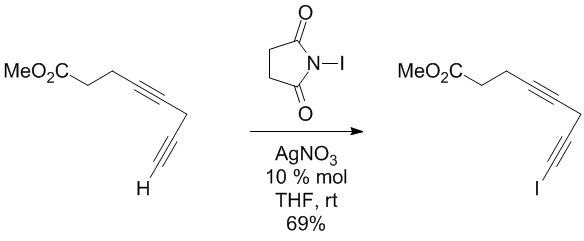2M oxalyl chloride solution in dichloromethane 60mL (120 mmol) was added to a slurry of 2-chloro-5-iodobenzoic acid 19.41g (68.71mmol, Lancaster) in dichloromethane 40mL followed by 4 drops of DMF. The flask was equipped with a Drierite-filled tube as a gas outlet and the mixture was stirred for 4 hours. The homogenous reaction mixture was diluted with toluene 25 mL and evaporated to dryness. The obtained solid acyl chloride was dissolved in anh THF 20mL under Ar and the solution was added dropwise into a stirred slurry of sodium tert-butoxide 7.2g (74.9 mmol, 97%, Aldrich) in anh. THF 150mL at 0C. (The acyl chloride flask and syringe was washed with anh. THF 2x10mL and washing also added to the reaction mixture). The mixture was stirred at 0C for 90 min, warmed up to RT, silica (30g) was added to the reaction mixture followed by water 0.4mL, stirred for 20 min, filtered through a plug of silica (2×1 in) , the silica was washed with additional THF (200mL). The filtrates were evaporated and the residue was dried on highvac overnight.
Y=22.69g (97.5%) of a pale yellow oil.
1H(d6-DMSO, 400MHz): 7.987(d, 2.2Hz, 1H), 7.862(dd, 8.5Hz, 2.2Hz, 1H), 7.331(d, 8.5Hz, 1H), 1.538(s, 9H)


